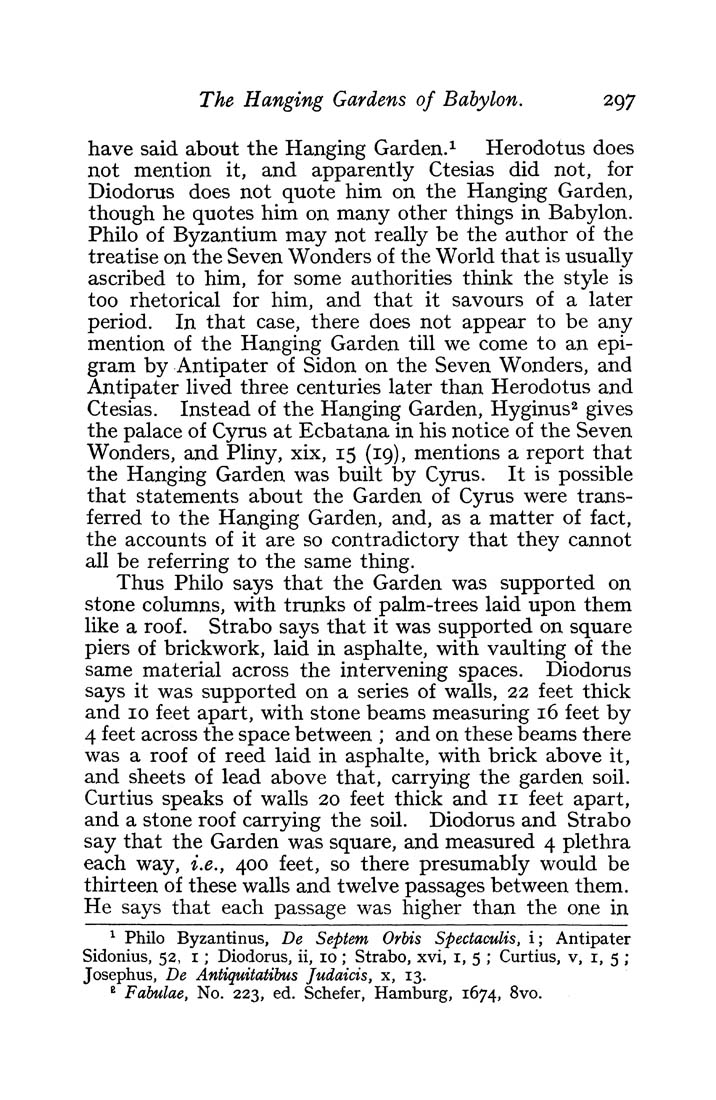The Hanging Gardens of Babylon. 297
have said about the Hanging Garden.^ Herodotus does
not mention it, and apparently Ctesias did not, for
Diodorus does not quote him on the Hanging Garden,
though he quotes him on many other things in Babylon.
Philo of Byzantium may not really be the author of the
treatise on the Seven Wonders of the World that is usually
ascribed to him, for some authorities think the style is
too rhetorical for him, and that it savours of a later
period. In that case, there does not appear to be any
mention of the Hanging Garden till we come to an epi¬
gram by Antipater of Sidon on the Seven Wonders, and
Antipater lived three centuries later than Herodotus and
Ctesias. Instead of the Hanging Garden, Hyginus^ gives
the palace of Cyrus at Ecbatana in his notice of the Seven
Wonders, and Pliny, xix, 15 (19), mentions a report that
the Hanging Garden was built by Cyrus. It is possible
that statements about the Garden of Cyrus were trans¬
ferred to the Hanging Garden, and, as a matter of fact,
the accounts of it are so contradictory that they cannot
all be referring to the same thing.
Thus Philo says that the Garden was supported on
stone columns, with trunks of palm-trees laid upon them
like a roof. Strabo says that it was supported on square
piers of brickwork, laid in asphalte, with vaulting of the
same material across the intervening spaces. Diodorus
says it was supported on a series of walls, 22 feet thick
and 10 feet apart, with stone beams measuring 16 feet by
4 feet across the space between ; and on these beams there
was a roof of reed laid in asphalte, with brick above it,
and sheets of lead above that, carrying the garden soil.
Curtius speaks of walls 20 feet thick and 11 feet apart,
and a stone roof carrying the soil. Diodorus and Strabo
say that the Garden was square, and measured 4 plethra
each way, i.e., 400 feet, so there presumably would be
thirteen of these walls and twelve passages between them.
He says that each passage was higher than the one in
^ Philo Byzantinus, De Septem Orbis Spectaculis, i; Antipater
Sidonius, 52, i; Diodorus, ii, 10; Strabo, xvi, i, 5 ; Curtius, v, i, 5 ;
Josephus, De Antiquitatibus fudaicis, x, 13.
^ Fabulae, No. 223, ed. Schefer, Hamburg, 1674, 8vo.
|








